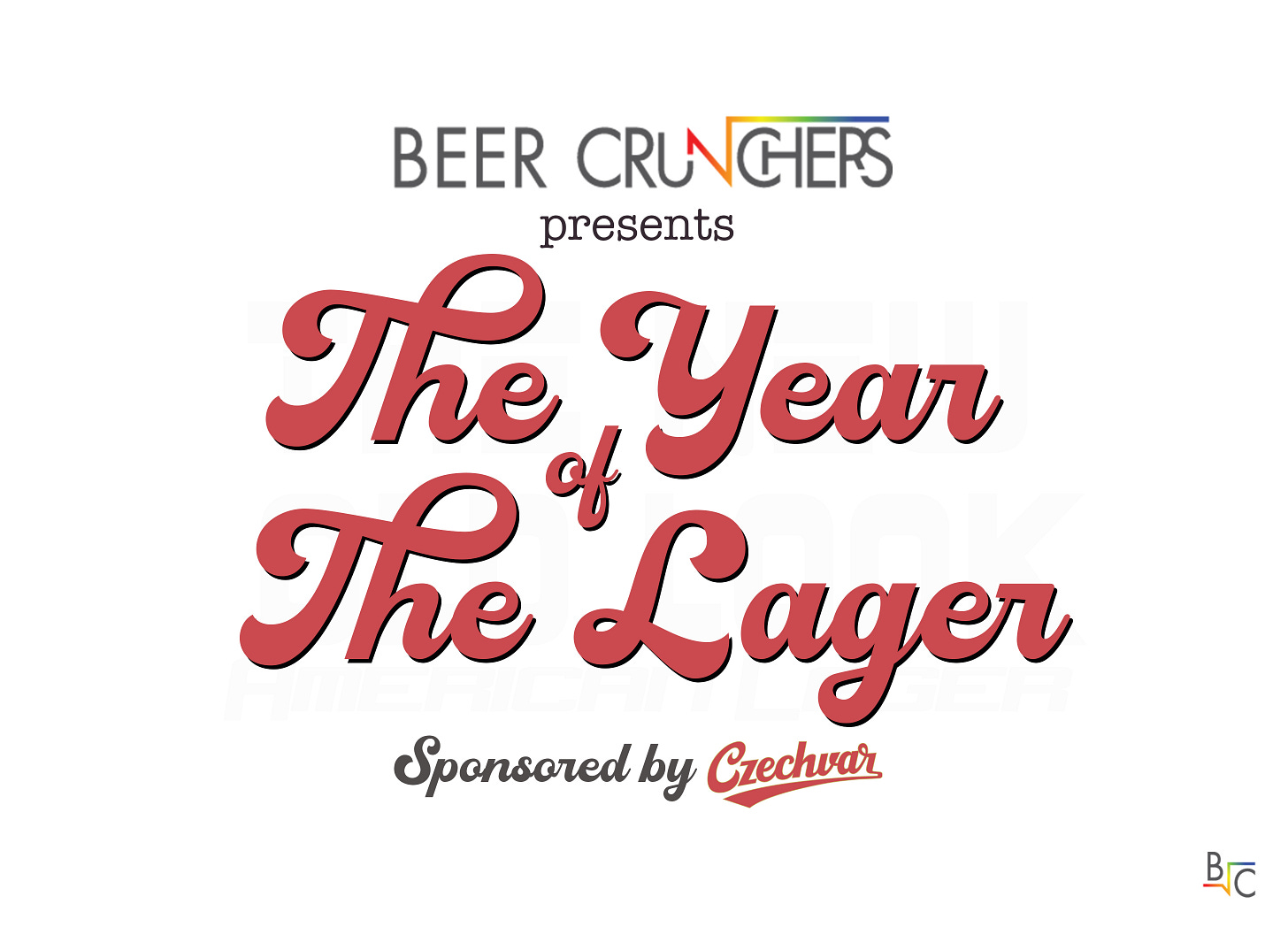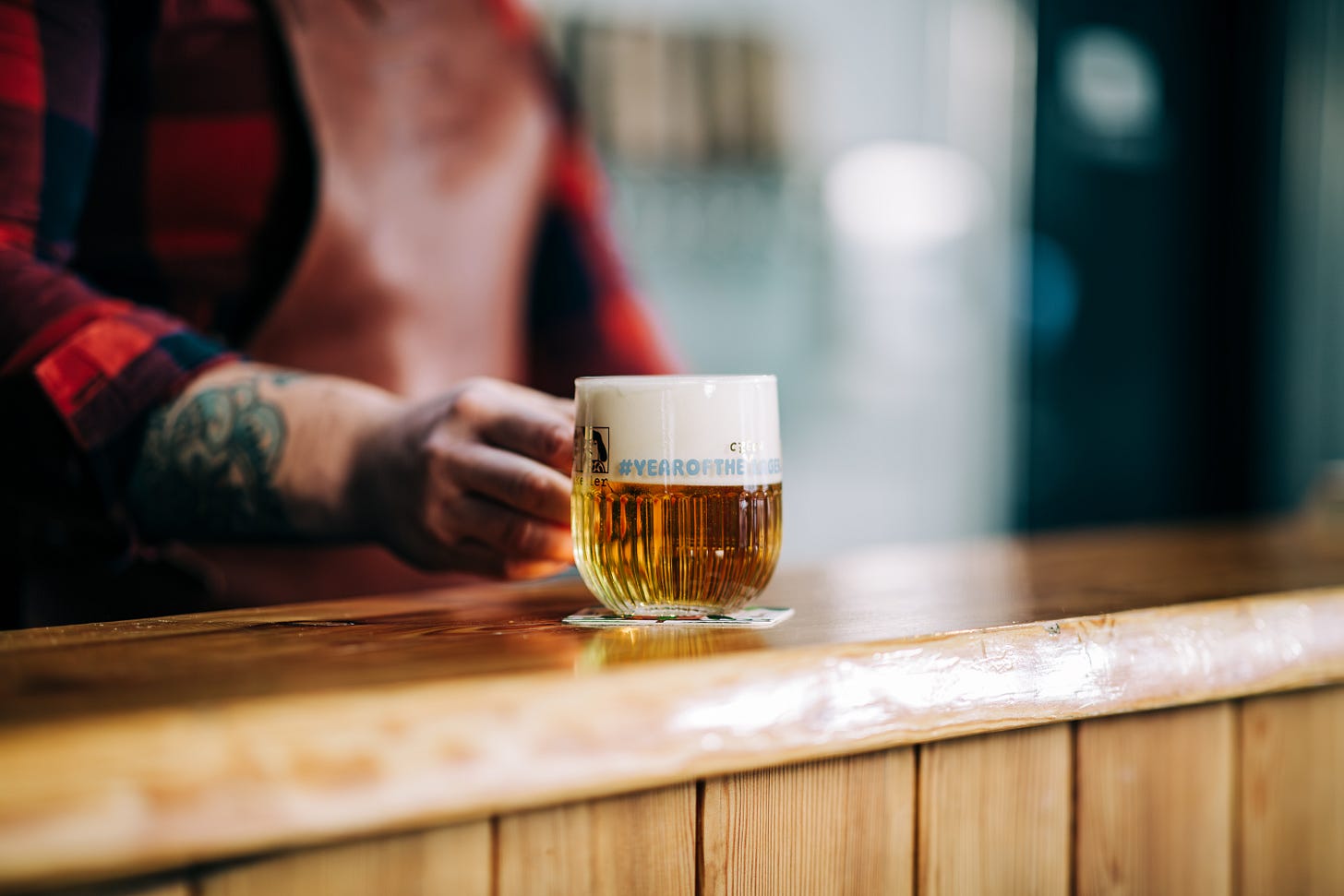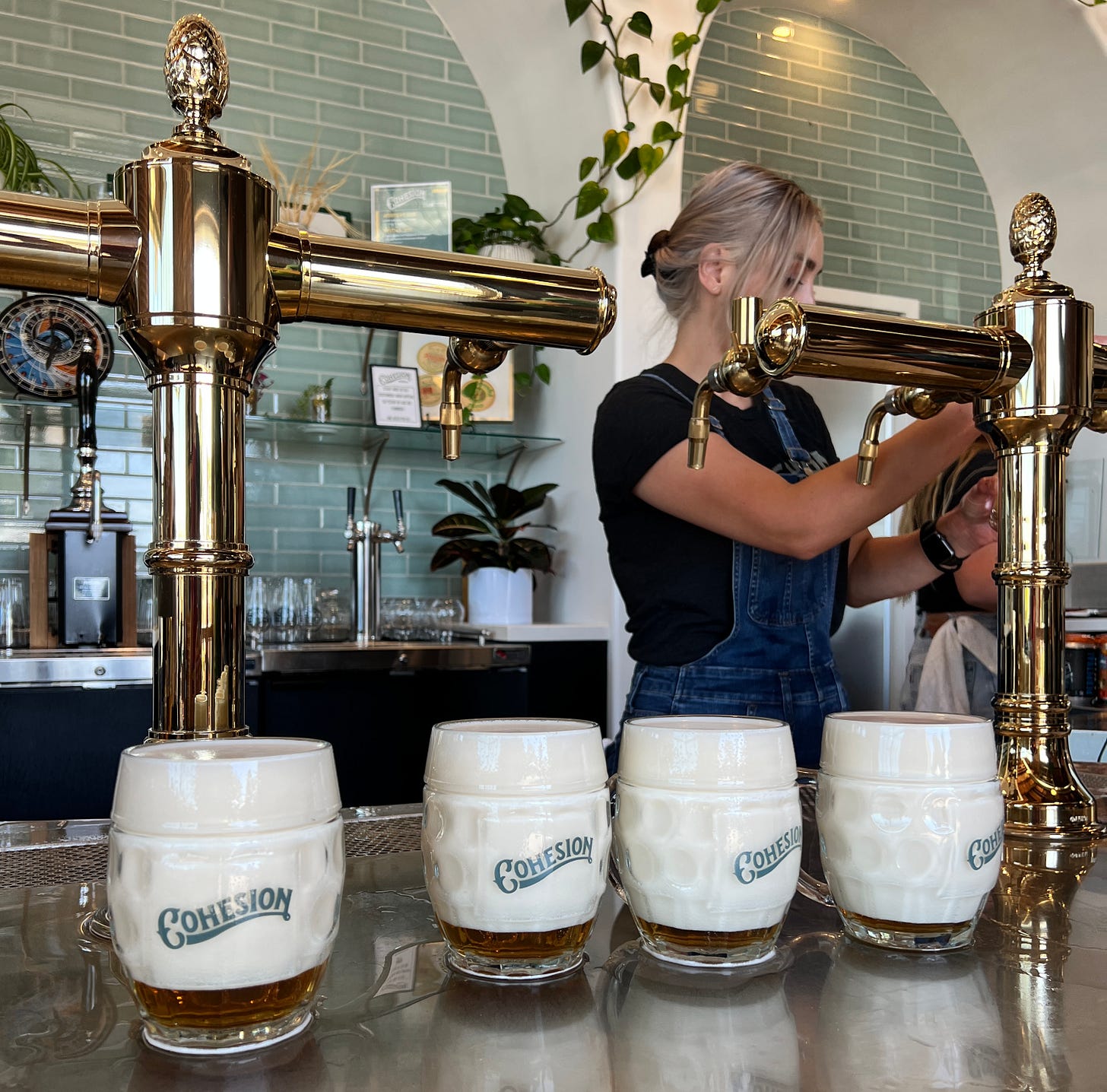Would you believe me if I told you that my most viral TikTok post in 2022 was about Czech Lagers, reaching 4.8M views? Then last year, on Instagram was a meme about how ready we all were for Czech Lagers to gain popularity? No style trend in recent memory has unified the highly segmented US beer fan more, with the good word spreading quickly and efficiently. The clean, crisp flavor and fuller body speaks to both non-craft drinkers who are ready to trade up and fatigued craft beer enthusiasts ready to simplify. A major shift is happening and the pumps are primed for:
After Nostradouglas did the unthinkable and predicted that 2024 would in fact be the “Year of the Lager”, the national brewery of the Czech Republic 🇨🇿 reached out to Beer Crunchers asking to team up and ensure this prediction indeed comes to fruition. By arming the US Craft Beer scene with the resources to make great Czech-style beer, Czechvar (known as Budvar locally) hopes to fuel the rising tide that will have more consumers saying ‘yes’ to real lager. I couldn’t think of a more appropriate message for my first ever partnership.
My personal appreciation for Czech lagers started when Chicago beer bars like Kaiser Tiger and The Map Room would make special arrangements to fly in unfiltered, unpasteurized kegs from the Czech Republic and ceremoniously tap them to great fanfare. The owners and staff would probably drink half of the keg themselves, but their excitement for this annual ritual rubbed off on me.
Family visits to California later led me to Santa Rosa’s Moonlight Brewing who are one of the earlier examples of US breweries who have been in the trenches for a few decades, putting the brilliance of Czech-style lagers on display. Being so early to the game, Moonlight had their choice of ALL the Czech puns, deciding on Reality Czech for their hallmark Lager. I couldn’t think of a more appropriate name to describe someone’s first experience enjoying one.
Other champions of the style have been scattered across the country since well before their recent rise, including Live Oak (Austin, TX), Heater Allen (McMinnville, OR), and Dovetail (Chicago, IL) who each lead with a Czech-style pilsner year-round. Throughout the pandemic, more breweries hit my radar screen by putting out thoughtful examples, including Art History and Roaring Table here in Illinois, then Urban Roots in Sacramento, CA. The latter is where I first saw an entire series branded by the degree scale (stupňovitost) that is customary in the Czech Republic to label the strength of beer, or the percentage by weight of extract in a solution.
As the number of craft breweries continues to climb and get crowded, especially in mature markets like Denver, brewers still looking to follow their dreams and open new spaces are often aiming at a more specific niche with a unique experiential angle. When I traveled to the Great American Beer Festival this past September, no brewery came more recommended than Cohesion, specializing exclusively in Czech-style beer and offering all 3 traditional pour types: Hladinka, Šnyt, and Mlíko.
When debating how and why Czech Lagers have managed to capture the US beer fan’s attention so quickly, I’ve heard many theories and there’s truth to all of them, including:
Consumers are ready to get excited about a style that not only doesn’t have IPA in the name, but is counter-culture to it.
Any modifier to a beer’s style name, including region, shows more intention by the brewery and peaks the curiosity of the consumer from an educational perspective.
The term Czech-style is perceived by craft beer consumers as a stamp of quality.
The on-site component of a proper Czech-style pour at a brewery or beer bar leaves customers with an elevated appreciation for the style and an experience that’s hard to replicate at home.
The virality of the different types of proper Czech pours, including the big, foamy Mlíko pour, help spread the curiosity and intrigue.
But with great new power, comes great responsibility. The rise in popularity of Czech-style Lagers has many brewers looking to capitalize and give the people what they want. While this is exciting for the style’s continued adoption, concerns boil up over the “Czech-style” descriptor being used to sell beer without the sufficient research, training, raw materials, and techniques being put forth.
In an effort to facilitate more education and a consistent approach to Czech-style brewing, Czechvar is sharing its centuries of expertise and guidance with breweries and homebrewers around the world as part of their #YearOfTheLager campaign designed to encourage more people to enjoy REAL lager – brewed carefully with proper ingredients and without cutting corners.
Here’s what they’re offering:
The Golden Rules, a free guide to brewing the best Czech-style lager, which features information and inspiration on every stage of brewing, from the optimum water composition to hop selection, traditional decoction mashing methods and lagering.
Free Webinar on February 22nd teaching everything you’ve ever wanted to know about brewing REAL lager and live Q&A webinar with Czechvar’s Deputy Brewmaster Petr Košín and Global Brand Ambassador Radim Zvanovec. Brewers can throw in questions about the brewing process, ingredients, and more. Sign-up here to receive e-mail updates.
EDIT: Now that the webinar has passed, here’s the recording:
What’s the catch? Very little! Czechvar just wants brewers around the world to celebrate the beauty that is Czech beer equipping them with the knowhow to follow the traditional methods and unify all the content generated from the process under #YearOfTheLager on social media 🤝
About Czechvar:
Czechvar is the national brewery of the Czech Republic, making an iconic lager that’s known the world over yet only ever brewed only in České Budějovice (Budweis) in South Bohemia. Fiercely independent, and proudly cold-conditioning its beer for months, Czechvar brews the same way it has since 1895, using the finest whole-cone Saaz hops, Moravian malts and artesian soft water from an Ice Age aquifer underneath the brewery. This has earned Czechvar Original ‘Protected Geographical Origin’ status from the EU. Small wonder it’s described as the “last true lager in Europe”.










Doug, I hope the pilsner continues to expand in the consumer's target of desire. Our brewery, has always focused on lagers and our Czech Pils is a year round staff favorite.
Starting today, with the annual release of our Anniversary German style pilsner, we'll have four different pilsners on tap with a keller version soon to appear. It's going to be interesting to see how sales flex out with such a variety.
We did a collaboration with Cohesion when our brewers met on a Czech industry funded trip to the Czech Republic. That trip plus this partnership with you is a very interesting approach to building the underlying market for Czech brewed products by encouraging American brewed pilsners of quality.
What's next?
Dude, I am SO envious of your connection to Budvar. I was just in Czechia and reminded myself, again, why it is the best drinking country in the world (despite incredibly stiff competition from the UK, Belgium, their neighbors in Germany, and your hometown).
I really hope this partnership involves a trip to Ceske Budejovice to tour the brewery with the incredibly delightful Adam Brôz. It is one of the best tours on the planet.